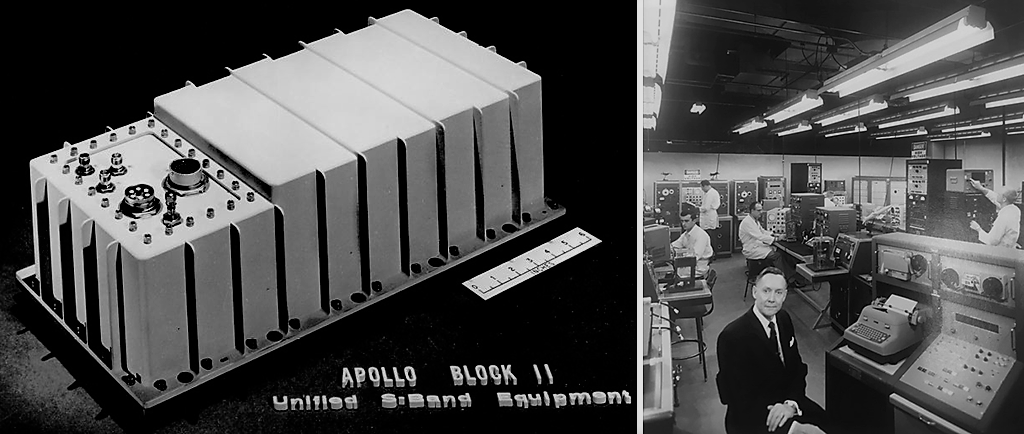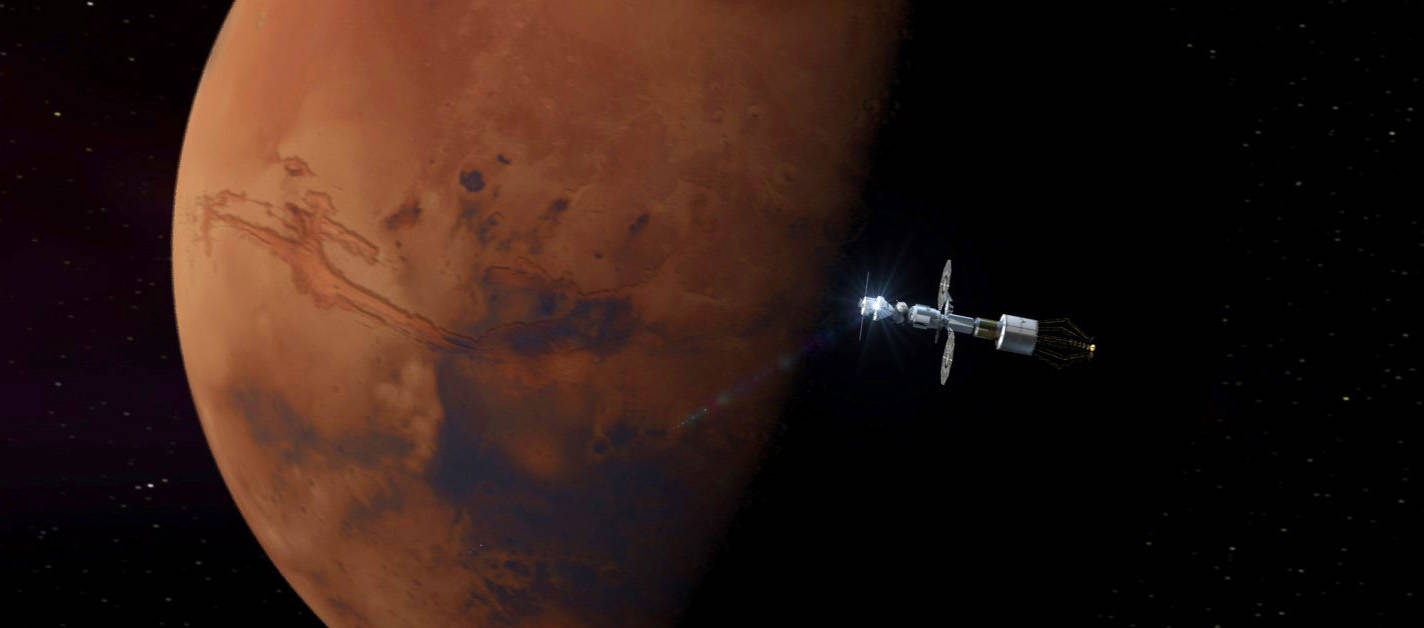400 missions in space. Over 50 years of progress since the first Moon landing. Infinite possibilities for what comes next.
Armstrong’s Giant Leap
“One small step for man. One giant leap for mankind.” These immortal words from Neil Armstrong during his Moon landing were heard by more than 600 million people on Earth thanks to General Dynamics radios.
In those early days of NASA and space exploration, General Dynamics Mission Systems, formerly a division of Motorola in Scottsdale, Arizona, was selected to build a communications system that could withstand the rigors of spaceflight while breaking barriers in communications between earth and the far reaches of the universe.
As we commemorate the 50th anniversary of the moon landing, General Dynamics is celebrating the historic engineering achievements of the Apollo missions, the progress that has been made since then, and the possibilities still to come.
The Small Step Heard ‘Round the World

The Apollo Unified S-Band Transponder (pictured left) was the only link the Apollo astronauts had with Mission Control after they reached a point approximately 30,000 miles from Earth. The Transponder was built at a General Dynamics facility, formerly a division of Motorola, in Scottsdale, AZ (pictured right). (Image Credit: Motorola)
Going to the moon — let alone walking on it — was the stuff of fiction when the Apollo story began with the Saturn rocket tests in 1961. That fiction became fact with one giant leap just eight years later.
Before Apollo 11 went down in history as one of mankind’s greatest achievements, General Dynamics was providing communications equipment for the Explorer, Mercury, Ranger, Mariner and Gemini missions. Without Mercury, which launched the first American into orbit, and Ranger, which took detailed images of the lunar surface, Armstrong’s first step on the moon would not have been possible.
And without General Dynamics S-Band transponders, Armstrong’s historic transmissions to mission control and the millions of viewers on Earth, would not have been possible.
“These astronauts were entirely dependent on our radio as their lifeline to earth — there was no fallback plan,” said Chris Brady, President of General Dynamics Mission Systems. “Astronauts and warfighters alike depend on products that must work because they are critical to mission success.”
Our engineers helped make history in the face of environmental and technological challenges, all on an abbreviated timeline. Not only were they contending with the extreme cold, heat and radiation of space, but also working to address a myriad of problems to make the transponders compatible with the spacecraft.
Over 50 Years of Innovation in Space

The moon might as well be an arm’s length away when you compare it to the vast distances of deep space — and General Dynamics’ technology was there to overcome that gap, too. As we ventured further into the solar system, our technology has helped provide a closer look at our celestial neighbors by transmitting data and images back to Earth.
General Dynamics is also modernizing NASA’s Space Network ground segment, which is responsible for communications, command, control and navigation of satellites that in turn support NASA and commercial space missions.
Orion, the first human spacecraft built for deep-space missions will have a transponder and emergency radios built by General Dynamics engineers. The transponder allows them to communicate through different frequencies, such as the NASA Space Network and Deep Space Network, as well as adjust its range to allow communication between two spacecraft outside of Earth’s orbit. When Orion’s crew makes its first manned trip to deep space, these radios will keep the astronauts and their spacecraft connected to mission command centers on Earth and with other space missions like the International Space Station.
“General Dynamics communication links have been on every deep space probe and aboard every Mars rover and lander,” said Manny Mora, vice president & general manager for Space and Intelligence Systems. “We are proud to be a life-long partner with NASA, starting in the 50’s and 60’s with the Explorer and Apollo missions, and will continue working closely with them, along with the U.S. Department of Defense and intelligence community, to shape the next 50 years of space exploration and support national security.”
General Dynamics Mission Systems’ breakthroughs also play an important role on Earth supporting national defense and the intelligence community. Space situational awareness is essential to threat awareness and avoidance on the ground — and General Dynamics’ technology and sensors are crucial to keeping these assets and their data secure.
New Technologies for the Next “Big Leap”

General Dynamics engineers are working to develop new communications systems using quantum technology that will support future NASA missions to Mars. (Photo Credit: NASA)
We now turn our eyes to the colonization of Mars as the next step in human space exploration. Today, it takes about 14 minutes to send data transmissions between Mars and Earth. We are developing new ways of getting more information to and from Earth with greater clarity and from further and further away. Innovations that radically change radio-frequency communication, advancements in artificial intelligence and machine learning, and quantum communications will forever change how we stay in touch with future communities on Mars and search for clues to the origins of the universe.
Through quantum, we are going to usher in a whole new age of science, engineering and exploration.
Quantum will allow us to set up un-hackable communication links while monitoring and reacting to potential security breaches in real time. Quantum also will help detect faint signals from the farthest reaches of space and earliest points of the universe for a glimpse at features of objects with thousands of times better resolution than with classical methods.
“Quantum capabilities can do extraordinary things to change the very ways we compute, the way we encrypt, and in all of these ways the world will change dramatically just as it did when our innovative technology brought to bear at the birth of our space program,” said Brady. “We’re going to be at the forefront of how to apply these and other developments to future missions.”



